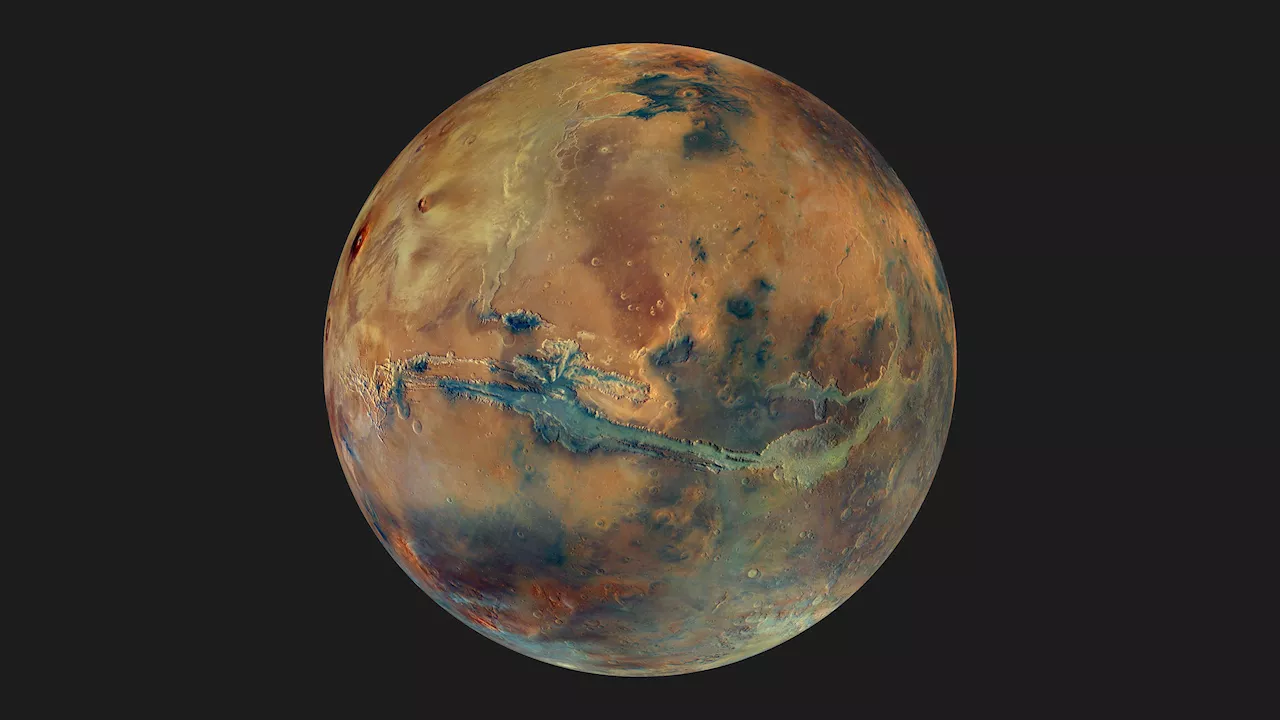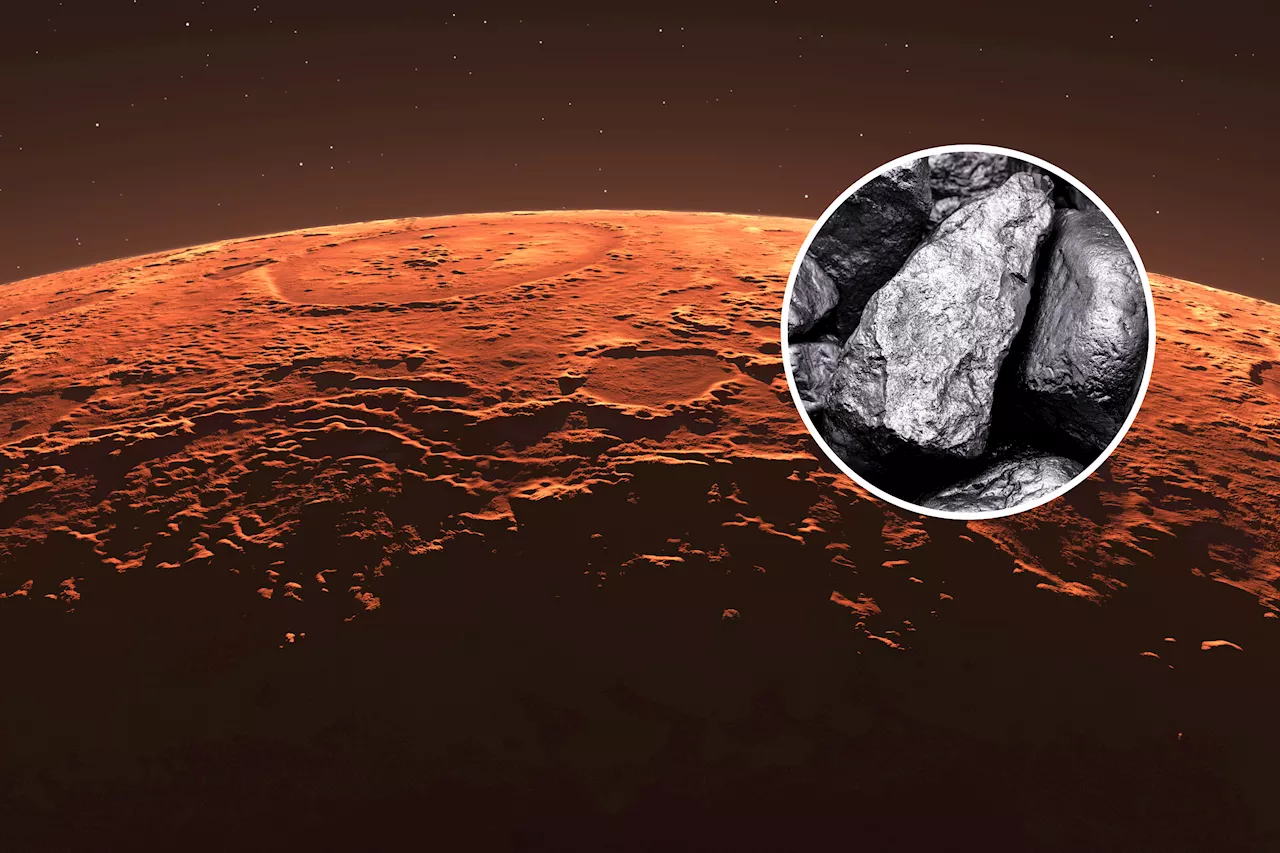Manganese was found in an ancient Mars lakebed, suggesting that the environment could have been highly useful to lifeforms.
Ancient Mars may have been surprisingly similar to planet Earth, a NASA rover has revealed.Using the ChemCam instrument on NASA's Curiosity rover, research teams from the Los Alamos National Laboratory's Space Science in New Mexico, and Applications group, made a strange discovery in the lakebed rocks of the red planet's Gale Crater. This crater is likely part of a dry lake, and is estimated to be around 3.5 to 3.8 billion years old.
'It is difficult for manganese oxide to form on the surface of Mars, so we didn't expect to find it in such high concentrations in a shoreline deposit,' Patrick Gasda, of the Los Alamos group and lead author on the study said in a statement.'On Earth, these types of deposits happen all the time because of the high oxygen in our atmosphere produced by photosynthetic life, and from microbes that help catalyze those manganese oxidation reactions.
South Africa Latest News, South Africa Headlines
Similar News:You can also read news stories similar to this one that we have collected from other news sources.
 Oldest ever ice offers glimpse of Earth before the ice agesClimate snapshots suggest carbon dioxide levels were surprisingly modest during ancient warm period
Oldest ever ice offers glimpse of Earth before the ice agesClimate snapshots suggest carbon dioxide levels were surprisingly modest during ancient warm period
Read more »
 Earth-like environment likely on ancient MarsA research team using the ChemCam instrument onboard NASA's Curiosity rover discovered higher-than-usual amounts of manganese in lakebed rocks within Gale Crater on Mars, which indicates that the sediments were formed in a river, delta, or near the shoreline of an ancient lake.
Earth-like environment likely on ancient MarsA research team using the ChemCam instrument onboard NASA's Curiosity rover discovered higher-than-usual amounts of manganese in lakebed rocks within Gale Crater on Mars, which indicates that the sediments were formed in a river, delta, or near the shoreline of an ancient lake.
Read more »
 Studying lake deposits in Idaho could give scientists insight into ancient traces of life on MarsI am an archaeologist and biological anthropologist who specializes in early human paleoecology. I am currently a Lecturer in the Department of Biological and Biomedical Sciences, School of Health & Behavioral Sciences, Bryant University and a Research Affiliate in the isoTROPIC Research Group at the Max Planck Institute of Geoanthropology.
Studying lake deposits in Idaho could give scientists insight into ancient traces of life on MarsI am an archaeologist and biological anthropologist who specializes in early human paleoecology. I am currently a Lecturer in the Department of Biological and Biomedical Sciences, School of Health & Behavioral Sciences, Bryant University and a Research Affiliate in the isoTROPIC Research Group at the Max Planck Institute of Geoanthropology.
Read more »
 New findings point to an Earth-like environment on ancient MarsA research team using the ChemCam instrument onboard NASA's Curiosity rover discovered higher-than-usual amounts of manganese in lakebed rocks within Gale Crater on Mars, which indicates that the sediments were formed in a river, delta, or near the shoreline of an ancient lake.
New findings point to an Earth-like environment on ancient MarsA research team using the ChemCam instrument onboard NASA's Curiosity rover discovered higher-than-usual amounts of manganese in lakebed rocks within Gale Crater on Mars, which indicates that the sediments were formed in a river, delta, or near the shoreline of an ancient lake.
Read more »
 Mars Express captures signs of spiders on MarsESA's Mars Express has captured haunting images of spiders on Mars, dark spots that appear when spring hits the Red Planet.
Mars Express captures signs of spiders on MarsESA's Mars Express has captured haunting images of spiders on Mars, dark spots that appear when spring hits the Red Planet.
Read more »
 Are we prepared for Chinese preeminence on the moon and Mars? (op-ed)Chris Carberry is the CEO and co-founder of Explore Mars, Inc. (Explore Mars), a 501(c)(3) nonprofit space advocacy. In this role, he has overseen Explore Mars’ annual Humans to Mars Summit, the largest annual conference focused on sending humans to Mars, and has spearheaded dozens of programs, projects, and outreach efforts.
Are we prepared for Chinese preeminence on the moon and Mars? (op-ed)Chris Carberry is the CEO and co-founder of Explore Mars, Inc. (Explore Mars), a 501(c)(3) nonprofit space advocacy. In this role, he has overseen Explore Mars’ annual Humans to Mars Summit, the largest annual conference focused on sending humans to Mars, and has spearheaded dozens of programs, projects, and outreach efforts.
Read more »
